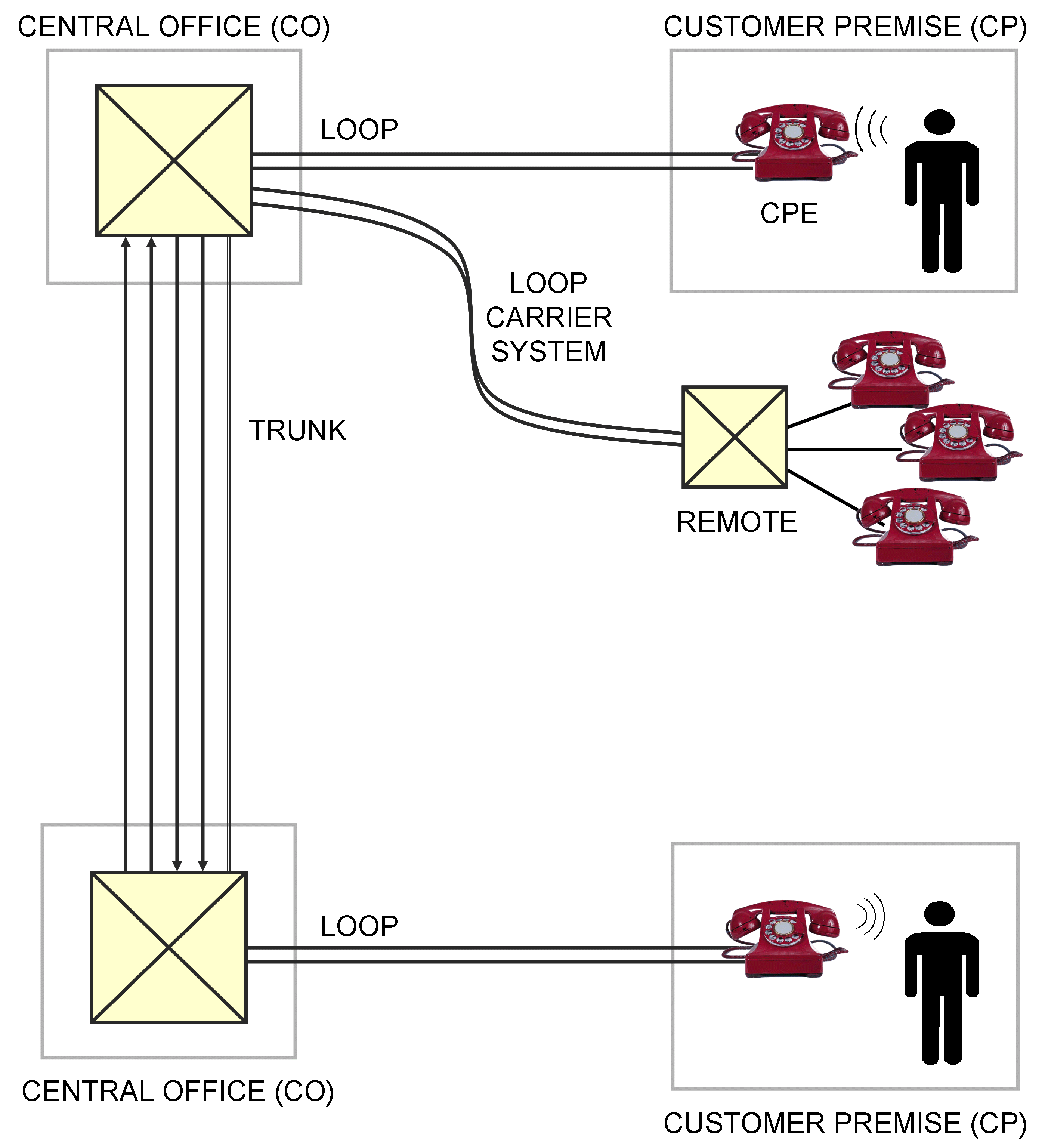Many communication technologies are based on those used in the Public Switched Telephone Network (PSTN), so regardless of whether you're interested in voice, data or networking, it is important to have an understanding of the structure and operation of the telephone network.
We begin with a basic model for the telephone network and will build on it in subsequent discussions. At the top of the diagram, we have a telephone and a telephone switch. The telephone is located in a building called a Customer Premise (CP), and the telephone switch is located in a building called a Central Office (CO). One could refer to the telephone as Customer Premise Equipment (CPE).

The telephone is connected to the telephone switch with two copper wires, often called a local loop or a subscriber loop, or simply a loop. This a dedicated access circuit from the customer premise into the network. We usually have the same arrangement at the other end, with the far-end telephone in a different customer premise and the far-end telephone switch usually in a different central office.
Copper is a good conductor of electricity - but not perfect: it has some resistance to the flow of electricity through it. Because of this, the signals on the loop diminish in intensity or attenuate with distance, and if the loop were too long, you wouldn't be able to hear the other person.
The maximum resistance allowed is usually 1300 ohms, which works out to about 18,000 feet or 18 kft, which is 3 miles or 5 km on standard-thickness 26-gauge cable, but could be as long as 14 miles or 22 km on thicker 19-gauge cable.
Thus, COs traditionally had a serving area of three miles radius around them, about 27 square miles or 75 square kms. With suburban sprawl, we can't build COs every five miles, so in practice, new subdivisions are served from remote switches, which are low-capacity switches in small huts or underground controlled environment vaults. The remote provides telephone service locally on the loops in the subdivision. The remote and the loops are connected back to the nearest CO via fiber or radio.
Telephone switches are connected with trunks. While subscriber loops are dedicated access circuits, trunks are shared connections between COs.
To establish a connection between one customer premise and another, the desired network address (telephone number) is signaled to the network (to the CO switch or remote) over the loop, then the switch seizes an unused trunk circuit going in the correct direction and the connects the loop to that trunk - for the duration of the call.
When one end or the other hangs up, the trunk is released for someone else to connect between those two COs.
This method for sharing the trunks is known as circuit switching. It was called dial-up when telephones had rotary dials.
It is important to note that even though today there may be digital switching and digital transmission, the last 3 miles / 5 km of the network, the subscriber loop, most often still has its original characteristics, which date back to the late 1800s (!).
Voice and data equipment that connects to the PSTN over regular telephone lines must work within the characteristics of the local loop, so an understanding of the characteristics and limitations of the local loop is essential.
Source:
- Teracom Instructor-Led Course 101 Telecom, Datacom and Networking for Non‑Engineers, slide 1.07
- TCO CTA and CTNS Online Course 2201: The PSTN, Lesson 3